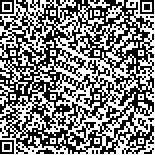| This article has been:Browse 990Times Download 842Times |

scan it! |
|
|
| DOI:10.13522/j.cnki.ggps.2020503 |
|
| Calculating Electrical Conductivity of Soil Using Electromagnetic Induction Data |
|
WU Jialin, PENG Jie, BAI Jianduo, WANG Jiawen, JI Wenjun, WANG Nan
|
|
1.College of Plant Sciences, Tarim University, Alar 843300, China;2.College of Land Science and Technology, China Agricultural University, Beijing 100083, China;3.College of Environment and Resources, Zhejiang University, Hangzhou 310058, China
|
| Abstract: |
| 【Background】Along with drought, soil salinization is one of the most important abiotic stresses facing agricultural production in arid and semi-arid regions like Xinjiang in northwest China. Saline soil is estimated to have reached 11 million hm2 in Xinjiang, and is a major limiting factor in cotton industry in this region. Accurately measuring soil salinity is hence important to safeguard cotton production in Xinjiang.【Objective】The purpose of this paper is to present a new method to estimate salinity distribution at field and regional scales to help improve irrigation and cultivation management.【Method】The experiments were conducted at Alar reclamation area in southern Xinjiang. Electrical conductivity of 540 soil samples taken from 30 cotton fields with different salinization levels were measured in soil profile at 0~0.375, 0~0.750, and 0~1.000 m depth. Using the electromagnetic induction data, linear and nonlinear models were constructed to inversely calculate the electrical conductivity of soil at field and regional scales respectively. Stability and reliability of the models was verified against ground-true data using the sample-size-reduction method.【Result】At field scale, the coefficient of determination R2 associated with the multiple linear regression model (MLR), the partial least square regression (PLSR) model and the principal component regression model (PCR) varied from 0.88 to 0.95, while their associated R2 for regional scale was from 0.34 to 0.53. The R2 of the nonlinear model built on the random forest (RF), neural network (NN) and support vector machine (SVM) varied between 0.60 and 0.85, with the RF most accurate. The R2 of the RF model for calculating the electrical conductivity of the soil profile at 0~0.375, 0~0.750, 0~1.000 m was 0.80, 0.85 and 0.84, respectively. Compared with the linear model, the model for regional scale significantly improved the accuracy. The sample size in the RF model for regional scale was reduced from 540 to 240, while the accuracy remained almost unchanged, indicating the regional-scale model can reduce the number of soil profile without compromising modelling accuracy.【Conclusion】For constructing the inversion model for estimating soil-profile electrical conductivity at regional scale, the random forest method is most accurate. |
| Key words: electromagnetic induction; regional scale; soil electrical conductivity; inversion model |
|
|